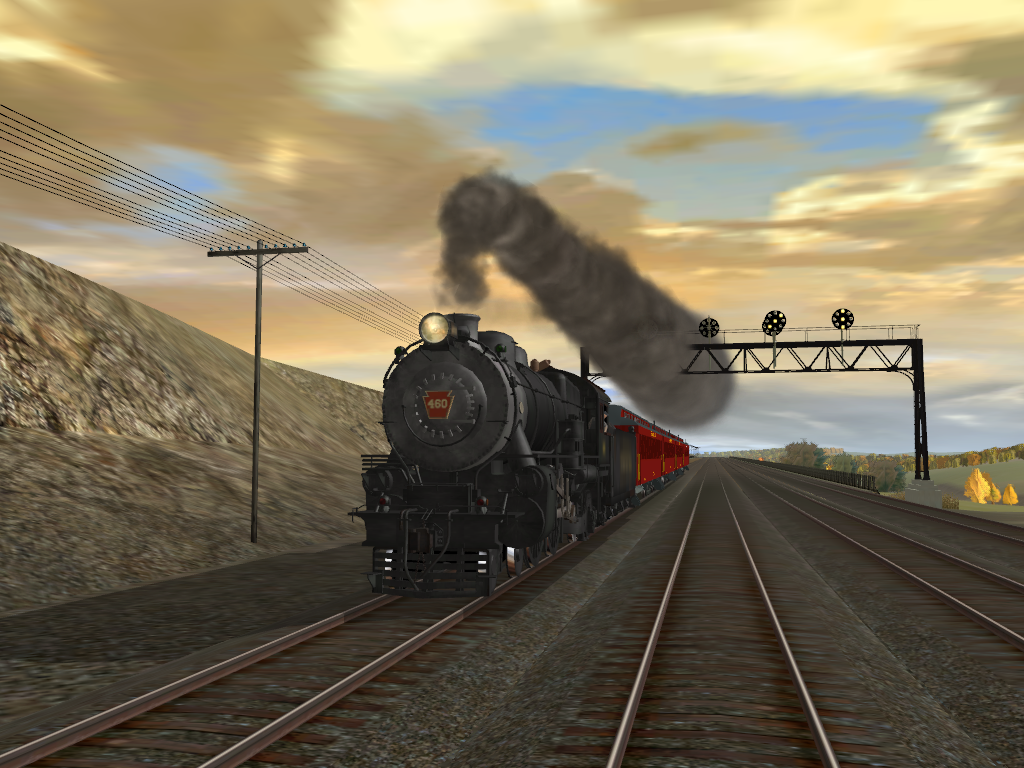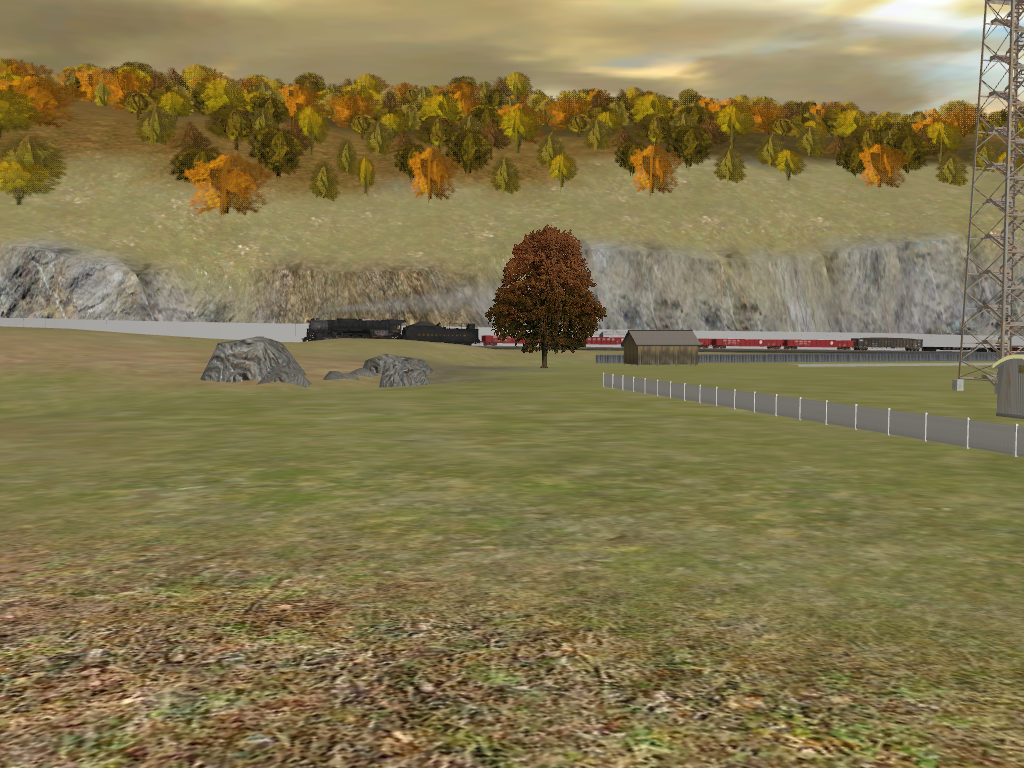Install the app
How to install the app on iOS
Follow along with the video below to see how to install our site as a web app on your home screen.
Note: This feature may not be available in some browsers.
You are using an out of date browser. It may not display this or other websites correctly.
You should upgrade or use an alternative browser.
You should upgrade or use an alternative browser.
K&L Trainz Steam Locomotive pics!
- Thread starter stevelerro
- Start date
jadebullet
might be back?
Just as long as you don't make it an oil burner with ditchlights. 
Looks great man.
Looks great man.
MeowRailroad
CKRail
Just as long as you don't make it an oil burner with ditchlights.
I am still so excited that they are restoring 2100, I think it could be one of the most powerful running steam locos in the east once it's done.

Those were its ditchlights.
The latest K&L Steamer in the works. Reading 4-8-4 T1
She already looks fantastic Steve! Can't wait to run her!
Oil burner would not be correct anyway as the Reading was smack in the middle of the anthracite coal fields of PA, that is why she has a different looking firebox.Just as long as you don't make it an oil burner with ditchlights.
Looks great man.
i think he was talking about before its current process of restoration, when it was a oil burner with ditchlightsOil burner would not be correct anyway as the Reading was smack in the middle of the anthracite coal fields of PA, that is why she has a different looking firebox.
stevelerro
Owner of K&L Trainz
Oil burner would not be correct anyway as the Reading was smack in the middle of the anthracite coal fields of PA, that is why she has a different looking firebox.
The T1s in general had wootens to burn Anthracite since they hauled it, but they ended up burning Bituminous Coal 90% of the time. The 2100 was converted to Oil in the 90s I believe when it was in Canada. I am assuming it will be converted back to burn coal during its current restoration.



MeowRailroad
CKRail
The large firebox was there so it could burn Anthracite, which burns at a lower temperature/is harder to burn. Having a large firebox allowed it to burn at the right temperature because there would be more coal burning at a lower temperature. If you used bituminous coal in it, it would probably just make more steam.
stevelerro
Owner of K&L Trainz
The large firebox was there so it could burn Anthracite, which burns at a lower temperature/is harder to burn. Having a large firebox allowed it to burn at the right temperature because there would be more coal burning at a lower temperature. If you used bituminous coal in it, it would probably just make more steam.
Because they hauled it, they had to burn it. So they did....only 10% of the time, the rest of the time they burned Bituminous.
I asked Steve Wickerson, who was the fireman on Ross Rowland's American Freedom Train and Chessie Steam Specials how they managed to get Anthracite when they took the 2101 on tour and he told me:
"We ALWAYS burned bituminous. We had to use anthracite once for a dead
head move and it did not do well. I cannot vouch for the "grade" of anthracite.
All I can say was that it was an awful experience. 2101 was damn near nuclear
on good soft coal. Pocahontas Soft coal practically explodes before it even hits
the grates. Anthracite just lays there and looks back at you and says ... "what?""
The T1's in general had Wootens to burn anthracite since they hauled it, but they ended up burning Bituminous Coal 90% of the time. The 2100 was converted to oil in the 90's I believe when it was in Canada. I am assuming it will be converted back to burn coal during its current restoration.
It was converted to oil because coal is harder to find in Washington. The installation was all screwed up so it didn't steam as good as it should have as evident by her whistle. Also, the ditchlights were put on because the shop-workers thought the engine would run in Canada, where there's a dumb regulation that has steamers have ditchlights put on when they are restored. In my opinion, ditchlights make steamers look too much like a diesel.
jadebullet
might be back?
Just going to dispell a few inaccuracies here.
First off, Anthracite burns at a higher temperature, not lower. It is about 80% carbon, and is much harder to burn, but it burns longer, and hotter than bituminious. The Wootens design was because you need a wide, shallow grate to burn anthracite, with a strong draft.
While the T-1s did have a wooten, they tended to burn bituminous due to the economic situation at the time. When the Wooten was first created, it allowed the railroad to burn culm. Culm was the waste coal that was created from mining, basically too low of grade to be sold, and normally too small. Basically coal chips from the breaker process. There are still culm piles around the anthracite region because there was just that much of it. The Wooten firebox allowed the railroads that used them to burn this cheap, waste coal rather than digging into the coal that they would much rather take to market. Around WWI though, Culm began to find an industrial use in power plants, as well as other uses. (Before then Anthracite tended to be for house heating use, and bituminous for industrial) Because of this, the railroads switched to using more and more bituminous in the mix, and then eventually just bituminous, since they could sell the culm for more. Essentially how the power plants work is that they are oil power plants, converted to burn powdered anthracite and culm.
And yes, Anthracite can be a b*tch if you don't know what you are doing. You definitely can't fire it like you can with soft coal, but once it starts cooking, it burns hot and long. Much better than than inferior soft coal.
First off, Anthracite burns at a higher temperature, not lower. It is about 80% carbon, and is much harder to burn, but it burns longer, and hotter than bituminious. The Wootens design was because you need a wide, shallow grate to burn anthracite, with a strong draft.
While the T-1s did have a wooten, they tended to burn bituminous due to the economic situation at the time. When the Wooten was first created, it allowed the railroad to burn culm. Culm was the waste coal that was created from mining, basically too low of grade to be sold, and normally too small. Basically coal chips from the breaker process. There are still culm piles around the anthracite region because there was just that much of it. The Wooten firebox allowed the railroads that used them to burn this cheap, waste coal rather than digging into the coal that they would much rather take to market. Around WWI though, Culm began to find an industrial use in power plants, as well as other uses. (Before then Anthracite tended to be for house heating use, and bituminous for industrial) Because of this, the railroads switched to using more and more bituminous in the mix, and then eventually just bituminous, since they could sell the culm for more. Essentially how the power plants work is that they are oil power plants, converted to burn powdered anthracite and culm.
And yes, Anthracite can be a b*tch if you don't know what you are doing. You definitely can't fire it like you can with soft coal, but once it starts cooking, it burns hot and long. Much better than than inferior soft coal.
Railwoodman
Well-known member
Excuse me quoting a pic. But where did you get that boxcar behind 1223????
stevelerro
Owner of K&L Trainz
Excuse me quoting a pic. But where did you get that boxcar behind 1223????
Looks like a reskin of KUID2:67794:100026:1 CR of NJ 36ft Wood Boxcar_1904
Looks to me like a 34' box car by DAP. Try kuid2:32711:100197:1 Pennsylvania empire linesExcuse me quoting a pic. But where did you get that boxcar behind 1223????
Similar threads
- Replies
- 3
- Views
- 2K
- Replies
- 18
- Views
- 7K



